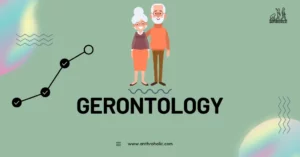AI Answer Evaluation Platform Live Now. Try Free Answer Evaluation Now
Ramapithecus
Before DNA testing and advanced fossil analysis, the search for humanity’s origins often relied on scattered bones and bold theories. In the mid-20th century, one fossil seemed to offer a breakthrough: Ramapithecus, an extinct ape from the Miocene epoch, was hailed as the earliest known human ancestor.

With its jaw fragments discovered in India and Kenya, scientists once believed Ramapithecus was a bipedal ape walking the path toward Homo sapiens. For decades, it appeared in textbooks and documentaries as “the missing link” between apes and humans.
But as science evolved, so did the story. New fossil evidence and genetic insights reshaped our understanding-and Ramapithecus was dethroned, no longer considered a direct ancestor of humans, but instead a close relative of the modern orangutan.
Discovery of Ramapithecus
Fossil Finds in India and Kenya
The first fossil fragments attributed to Ramapithecus were discovered in 1932 by British paleontologist G. Edward Lewis in the Siwalik Hills of northern India. The remains consisted of part of a jawbone with teeth, dating back to the Middle Miocene period, around 12 to 14 million years ago.
Later, similar fossils were found in Kenya during the 1960s. These remains were originally classified separately but were eventually grouped under the genus Ramapithecus, based on similarities in dental and jaw structure.
Who Discovered Ramapithecus and Why It Was Significant
It was Elwyn Simons, a noted American paleontologist, who brought Ramapithecus into the spotlight in the 1960s. Based on limited fossils, Simons and others proposed that Ramapithecus had human-like features, especially in the jaw, and may have walked upright. This fueled speculation that it was the earliest known ancestor of humans.
In a time before we had reliable genetic tools or complete fossil records, Ramapithecus offered a tantalizing “missing link” between modern humans and our ape-like ancestors.
Early Interpretations and Classification
Based on the parabolic shape of the jaw and small canine teeth, scientists concluded that Ramapithecus:
- Had a reduced snout (unlike apes)
- Was likely omnivorous, with a more human-like diet
- Might have walked semi-upright (though no leg bones were found)
These traits aligned with what researchers expected in early hominins (the group that includes humans and our immediate ancestors). Ramapithecus was thus placed directly on the human lineage, between ape-like ancestors and Australopithecus.
Why Ramapithecus Was Once Seen as a Human Ancestor
Jaw Structure and Teeth
The primary evidence for Ramapithecus’s “human” classification was:
- A parabolic (rounded) dental arch, unlike the U-shape seen in most apes
- Small, relatively flat molars
- Reduced canine teeth, suggesting less male-male aggression-typical of social behavior in humans
These traits were interpreted as signs of a shift toward more advanced chewing and social systems, similar to early hominins.
Human-Like Traits (As Believed at the Time)
With no postcranial skeleton (no legs, arms, or pelvis), scientists had to infer behavior from jaw fragments. But in the 1960s-70s, there was a strong desire to pinpoint a direct human ancestor-and Ramapithecus seemed to fit.
Assumptions included:
- Bipedalism (based purely on facial structure)
- A social structure closer to humans than apes
- A timeline that matched then-current theories of human evolution
20th-Century Evolutionary Models
At the time, many researchers believed the human-ape split occurred around 14-15 million years ago, making Ramapithecus a perfect candidate. He appeared right when that split supposedly happened, and had traits that could be interpreted as early human.
The Scientific Debate and Reassessment
New Fossil Finds and Reinterpretation
In the 1970s and 1980s, more complete fossil specimens began to emerge-especially from Pakistan and India-that included jawbones and facial structures. These fossils bore striking similarities to another genus: Sivapithecus, a Miocene ape.
These more complete fossils revealed:
- A V-shaped jaw, not the parabolic one previously assumed
- Large projecting canine teeth, contrary to earlier interpretations
- A skull and face nearly identical to that of a modern orangutan
In light of these findings, scientists realized that Ramapithecus wasn’t a separate genus at all. It was likely a female or young Sivapithecus, and had been mistakenly overinterpreted due to the limited fossil material.
Connection to Sivapithecus
By the late 1980s, the consensus among paleoanthropologists was clear:
- Ramapithecus is not a distinct genus
- It is a synonym or subspecies of Sivapithecus, an extinct ape closely related to the modern orangutan (Pongo)
This completely removed Ramapithecus from the human family tree. It was not a hominin, but a side branch in ape evolution that specialized in arboreal life in Asian forests.
What Modern Science Says Today
Today, Ramapithecus is considered:
- An early Miocene ape, not a human ancestor
- Likely part of the orangutan lineage, not the lineage that led to Homo sapiens
- An important case of how limited evidence can lead to premature conclusions
While no longer part of our evolutionary lineage, Ramapithecus still holds historical value in the development of paleoanthropological thinking.
Ramapithecus in the Context of Human Evolution
Role During the Miocene Epoch
Ramapithecus lived during the Miocene epoch (roughly 23 to 5 million years ago), a time when ape species flourished across Africa, Europe, and Asia. This period was marked by:
- High ape diversity
- Widespread environmental change
- Early evolutionary experiments that produced ancestors of modern apes and, eventually, humans
Ramapithecus, while not in the human line, represents one of many “offshoots” in ape evolution that highlight how complex our ancestry really is.
Shift From Bipedal Theory to Ape Lineage
The biggest mistake scientists made was assuming jaw shape alone could indicate bipedalism or human-like behavior. Today, we know:
- Postcranial evidence (pelvis, leg bones, spinal structure) is crucial for understanding locomotion
- Jaw and teeth can evolve convergently, meaning similar shapes don’t always mean close relationships
This helped reshape scientific methodology, reinforcing the need for cautious, evidence-based interpretation.
Lessons From the Ramapithecus Debate
Ramapithecus reminds us of the importance of:
- Skepticism and peer review in science
- Avoiding overinterpretation of fragmentary fossils
- Understanding that science is self-correcting-early mistakes lead to stronger models
What We’ve Learned from Ramapithecus
The story of Ramapithecus is not one of failure-it’s one of progress. Once hailed as the earliest known human ancestor, Ramapithecus stood in the evolutionary spotlight for decades, bridging a perceived gap between apes and humans. But as science advanced and more fossils were discovered, this image unraveled.
What we now know is that Ramapithecus was not a hominin, but likely a close relative of the modern orangutan, part of an evolutionary side branch that flourished during the Miocene epoch. Its brief fame in the human family tree was based on limited evidence and hopeful interpretation-a valuable reminder that science evolves.
Ramapithecus still matters, not because it led to us, but because it shows how paleoanthropology is a living, self-correcting discipline. It taught researchers to be more critical of fragmentary evidence and more cautious in drawing evolutionary conclusions.
References
- Britannica – Ramapithecus
Details the discovery of Ramapithecus fossils in 1932 in the Siwālik hills of northern India and the subsequent studies that led to its initial classification as a human ancestor.
https://www.britannica.com/topic/Ramapithecus - ResearchGate -The relationships of Sivapithecus and Ramapithecus and the evolution of the orang-utan
Discusses morphological studies suggesting that Sivapithecus, and thus Ramapithecus, was very similar to the orangutan, indicating a close evolutionary relationship.
https://www.researchgate.net/publication/16152719_The_relationships_of_Sivapithecus_and_Ramapithecus_and_the_evolution_of_the_orang-utan - PubMed – The relationships of Sivapithecus and Ramapithecus and the evolution of the orang-utan
Provides molecular data supporting the close relationship between Sivapithecus (and thus Ramapithecus) and the modern orangutan.
https://pubmed.ncbi.nlm.nih.gov/7045678/ - Britannica Kids -Ramapithecus
Offers a concise overview of Ramapithecus, its discovery, and its significance in the study of human evolution.
https://kids.britannica.com/students/article/Ramapithecus/334129 - ScienceDirect -Ramapithecus and hominoid evolution
Analyzes the consensus view of Ramapithecus as the earliest hominid and the challenges posed by new molecular studies and fossil discoveries.
https://www.sciencedirect.com/science/article/abs/pii/S0047248482801085 - ResearchGate – Dr. Ed Lewis at Haritalyanger in 1932
Highlights the initial discovery of Ramapithecus by G.E. Lewis and the subsequent classification debates.
https://www.researchgate.net/figure/Dr-Ed-Lewis-at-Haritalyanger-in-1932_fig2_227055436




